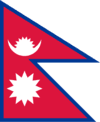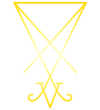Names of Zeus: Ngai
Ngai or Enkai is the representation of Zeus in much of the pantheon of the Kikuyu and certain other groups in modern-day East Africa, including the pastoralists named the Maasai. He is held to be the personification of the Sun, the Moon, lightning, and thunder, but is also synonymous with cows and the bull in symbolism.
SYMBOLISM OF NGAI
The word “Ngai” represents the word sky in the Maa language. Regarding Enkai, which is the Maa language of the Maasai people, this means "Supreme Being of the Skies." In Maasai cosmology, the earth and skies were held to be one before being split into two. The Kikuyu peoples were separated by caste and their means of consumption: as warriors, the Maasai were given the right to herd and eat cattle, while the other groups resident in the region had to subsist off farming grains and hunting.
Any pursuit other than a pastoral one was considered insulting to Ngai and profoundly demeaning, for the soil was sacred on account of its producing grass which fed the cattle that belonged to God. No Maasai was willing to till the soil, even to bury the dead within it.

Due to the pastoral privileges the God meted out to them, the Maasai hold Ngai to be particularly important to cattle and bulls. These animals are held with reverence, as they symbolically feel He expresses Himself through them. The majority of Maasai rites are accompanied by copious beef-eating and milk consumption due to this symbolism.
As Ngai is a sky God, thunder became the interpretation of the movements of God. Lightning is Ngai’s weapon; He uses this to clear the way when moving from one sacred place to another. One of His titles, “Mwene-Nyanga,” reflects this tendency, as it means Shining One.
Like many Bantu deities, He is androgynous and often represented in a feminine manner.
It is believed He resides in fig trees, where sacrifices are made to Him at different times for different purposes, facing Mount Kenya.
THE ROLES OF NGAI
There are anthropomorphic aspects. The Kikuyu say that He lives in the sky or in the clouds. It is also said that He comes to earth from time to time to inspect it, bestow blessings, and mete out punishment.

Whenever Ngai comes to the Kenyan people, He rests on Mount Kenya and four other sacred mountains, similar to the Chinese idea of five sacred mountains. Ngai, to the Kikuyu people, created His home in the sky and on earth upon Kĩrĩ-Nyaga (Mount Kenya), the Mountain of Brightness [the second-highest mountain in Africa], and to the Maasai, His dwelling place is the "Mountain of God," Ol Doinyo Lengai, located in northernmost Tanzania.
At birth, Ngai gives each man a guardian spirit to ward off danger and carry him away at the moment of death. The evil are carried off to a desert, while the good, unsurprisingly, go to a land of rich pastures and many cattle. Enkai's wife is Olapa, the Moon.
Enkai has a dual nature: Engai Narok (Black God) represents benevolence, and Engai Na-nyokie (Red God) signifies wrath, emphasizing His role as a Creator who sustains natural harmony. He is thus separated into a red and black aspect. The black aspect of Ngai is considered benevolent, kind, and useful, while the red aspect tends to be associated with rages and storms.
LAIBON
The Laiboni are the priests of the Maasai. They practice divination through using stones in the horn of a cow, typically regarded as a central way of communicating with divinity, as in most Bantu groups. Like many priesthoods across the planet, the position is inherited.
Laibon priests interpret messages and also function as medicine men, to the point where most medical prognostics are combined with their advice well into the era of Christianization and Islamization in Kenya.
Certain beliefs of the Maasai reflect the idea of an antediluvian flood and a prophet giving multiple commandments to them. It is unknown if this originated from direct enemy influence, Islamic influence, or some sort of correspondence with Babylon and Egypt, both of which were known to interact strongly with the East African coast. Certain aspects of Maasai rituals point scholars toward the latter:
Journal in Kenya, C.C.L.
The dead man is laid upon his right side, with his head resting upon his hand, as though he were sleeping. A woman is laid in the same manner, but on the left side. The face is turned to the East or the West. This contracted form of burial was used in Canaan, also in Babylon, as it was in Egypt.
BIBLIOGRAPHY
Journal in Kenya, C.C.L
Ngai, Encyclopedia of African Religion
Ngai and the Message of Life, Oxford Reference,
Ngai & Origins of the Agĩkũyũ of Kenya, The Aegis Institute
Engai, Google Arts and Culture
Maasai – Religion and Beliefs, bluegecko, Jens Finke
CREDITS:
Karnonnos [TG]
MWENE NYAGA (textual references to mountains, numerous suggestions, mythology)

 አማርኛ
አማርኛ العربية
العربية বাংলা
বাংলা Български
Български 中文
中文 Čeština
Čeština Dansk
Dansk Deutsch
Deutsch Eesti
Eesti Ελληνικά
Ελληνικά Español
Español Français
Français हिन्दी
हिन्दी Hrvatski
Hrvatski IsiZulu
IsiZulu Italiano
Italiano 日本語
日本語 Kiswahili
Kiswahili Magyar
Magyar Македонски
Македонски नेपाली
नेपाली Nederlands
Nederlands فارسی
فارسی Polski
Polski Português
Português Română
Română Русский
Русский Slovenščina
Slovenščina Suomi
Suomi Svenska
Svenska Tagalog
Tagalog Türkçe
Türkçe